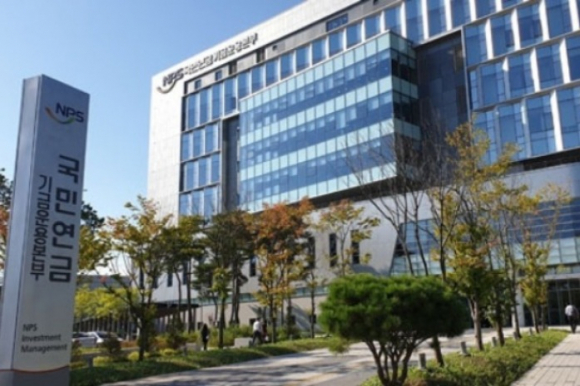
National Pension Service's Investment Management headquarter National Pension Service (NPS) of South Korea, the world’s third-largest pension fund, has adjusted its five-year asset allocation plan to enhance investment return as well as minimize its impact on the local stock market. It is planning to reduce exposure to Korean public equity and bond while increasing overseas assets. NPS fund management committee decided to reduce its domestic public equity proportion to 14% by the end-2027, during its annual meeting for mid-to-long-term investment on Friday. Last year, the committee set the proportion as 14% by the end-2026.The local equity proportion is set to be 16.3% by the end of this year. Despite the reduction in the percentage, the pension fund’s Korean equity investment volume will increase from 164.9 trillion won ($131.6 billion) in the end-2022 to 192 trillion won in the end-2027 due to the soaring assets under management.NPS also decided to slash the domestic public bond proportion to 22.9% as of the end-2027 from 34.5% as of the end-2022. Last year, the pension fund set the local bond proportion as 24.7% by the end-2026. Due to the drastic reduction in the percentage, the local bond investment size will decline from 348.1 trillion won as of the end-2022 to 347.1 trillion won by the end-2023 and 314.1 trillion won by the end-2027.On the other hand, the overseas assets are set to increase. Investing 26.2% of the AUM in overseas public bond as of the end-February, the pension fund targets 38.5% by the end-2026. During the Friday meeting, it increased the percentage to 40.3% as of the end-2027. The pension plan held overseas public bond proportion as 8% for both the end-2026 and the end-2027. The target exposure in alternative investment slightly rose from 14.3% as of the end-2026 to 14.8% as of the end-2027.RAPID AGING PRESSURES LIQUIDATION PLANThere are two main reasons for NPS’ move to reduce exposure to Korean equity while increasing global equity. The first reason is that overseas assets show greater profitability than local assets. The pension fund saw a 6.45% of annualized return on local assets for the past three years, compared with 18.04% on overseas assets during the same period. The gap between the returns further widened last year when the economic recovery started – 2.04% return on local assets and 25.44% on overseas. “Overseas assets’ return rate has been more than double or triple local assets’ return rate in the past. Based on the high profitability and diversification effects, the fund management arm should increase overseas investment,” the committee said on Friday.The other reason is to minimize shock to the local stock market by disinvesting in the future. The number of pension recipients is fast-growing in Korea due to the rapid population aging, which grows need for increases in reserve funds by disinvesting. If NPS keeps holding a high rate of Korean stocks, its share dumping at once could turn as a heavy impact on the local market. LARGER SHOCK TO KOREAN BOND MARKET NPS holds 6.3% of the market capitalization on the main bourse Kospi and secondary Kosdaq as of the end-2021. It will keep gradually reducing exposure in domestic equity and bond in a bid to prevent the liquidation-caused impact on the local market, the committee said The pension fund’s total assets reach 918.2 trillion won as of the end-February. The assets will steadily increase to 1.07 quadrillion won until 2038 and will decline from 2039, according to Korea’s National Assembly Budget Office’s estimation in 2020. This indicates NPS has 17 years by the timing it needs to distribute pension by liquidating assets.NPS won’t shock the Korean stock market in the short term as the increase in its assets overwhelms the decrease in the ownership percentage. However, its influence on the local public bond market will be relatively large as the investment size will decline.By Eui-Jin Jeong and Jun-Ho Chajustjin@hankyung.comJihyun Kim edited this article.
Most Read